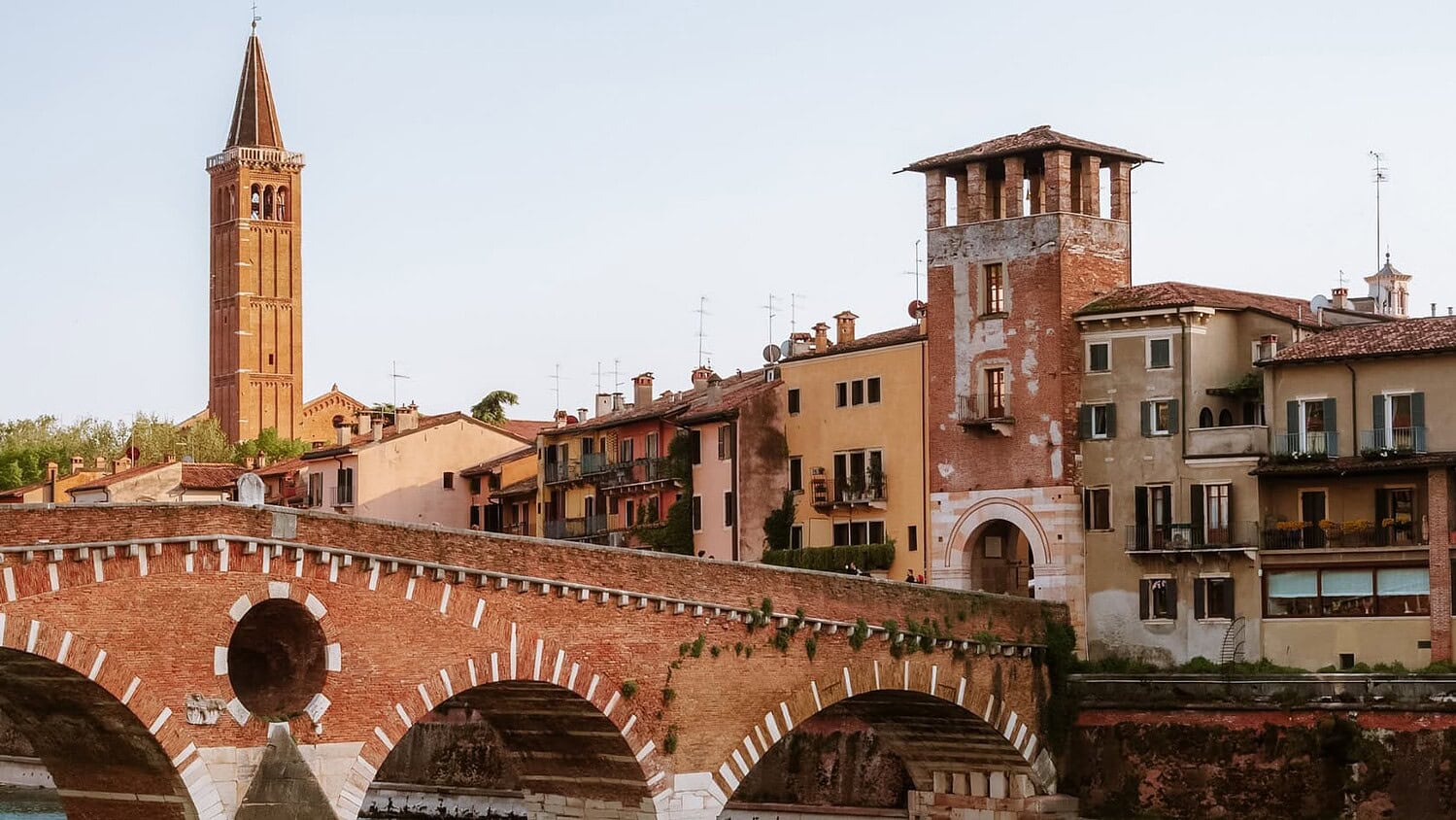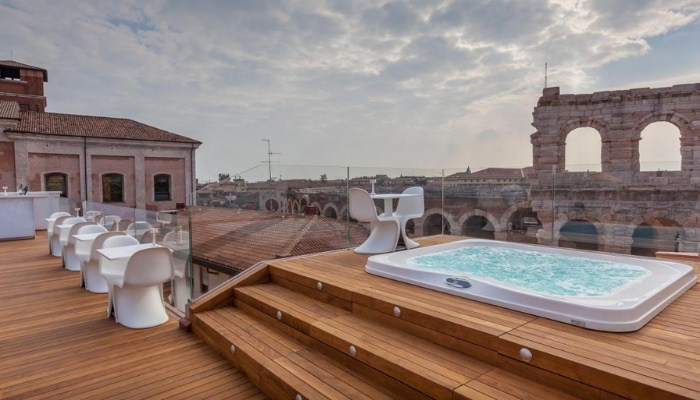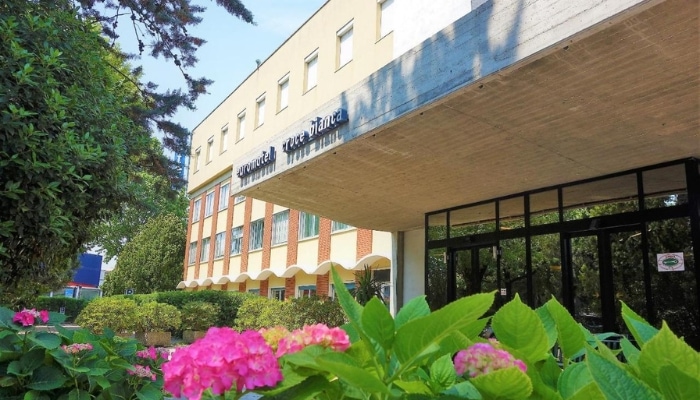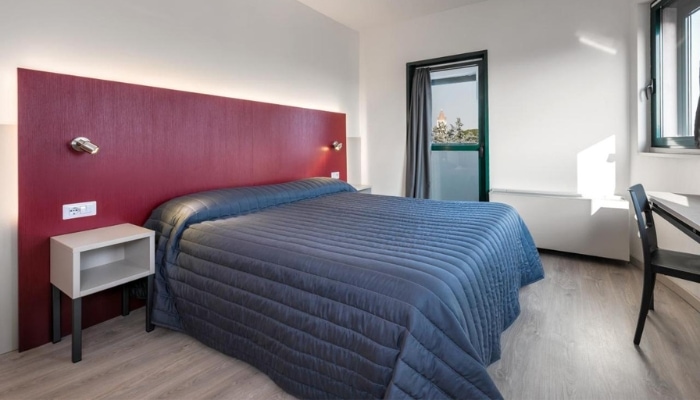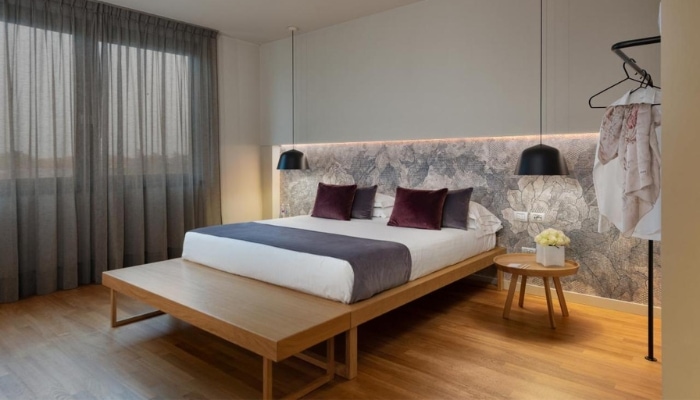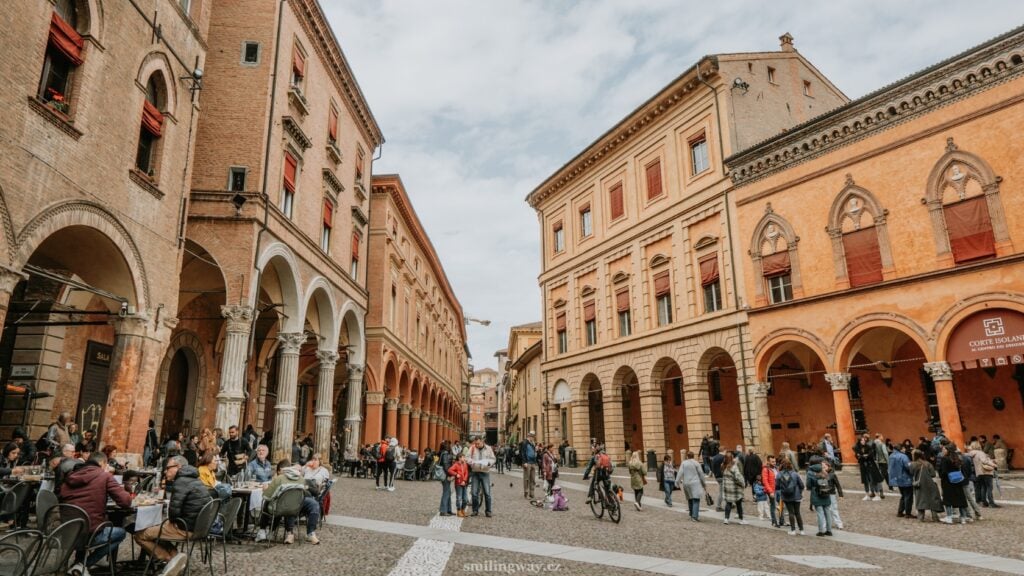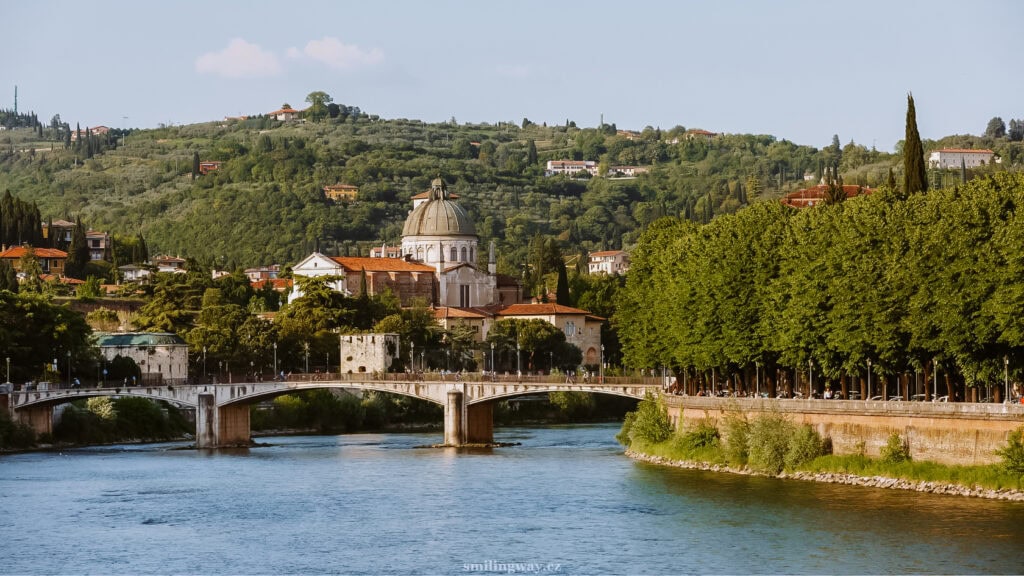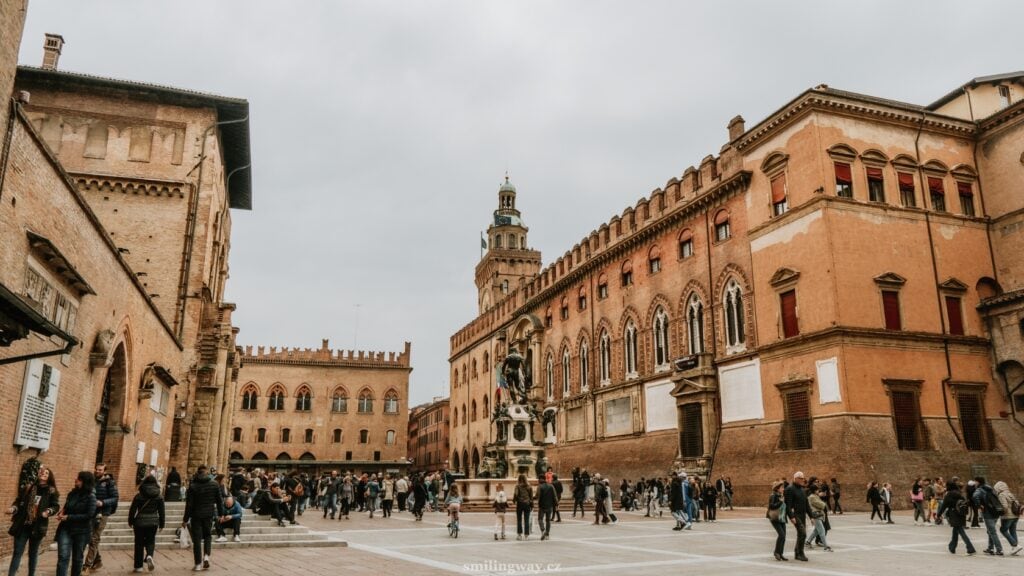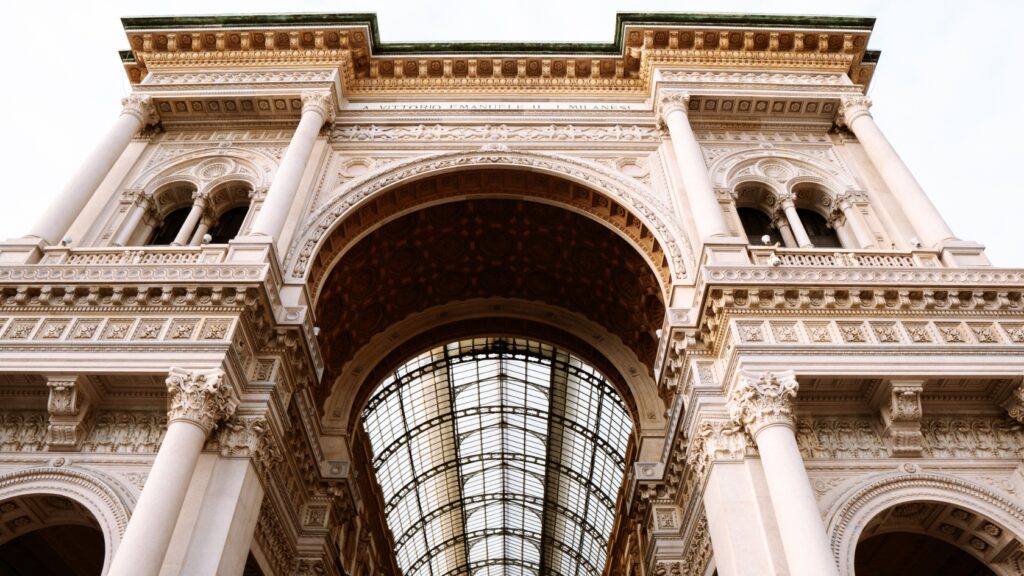Verona. Located on the banks of the Adige River in northern Italy, the City of Love will captivate you with its stunning architecture, picturesque canals and rich culture. Take a look at our guide with tips on attractions and sights to visit in Verona.
Today we will show you the most beautiful places and sights to visit and see in Verona to make an itinerary for 1 or 2 days in Verona (See our itinerary for one day in Verona). We’ll also add tips on how to enjoy your visit to Verona, Italy (transport, parking, public transport, food, accommodation, map).
Best Things to do in Verona: Must-see places
Stroll through the narrow cobbled streets lined with colourful houses with shutters, discover places from the story of Romeo and Juliet or visit one of Verona’s churches, which will absolutely enchant you with their ornate interiors and long history.
Tip: Would you like to save money on admission to the sights? Verona Card is the official tourist card of Verona, which gives you free entry to the Arena di Verona, Castelvecchio, Casa di Giulietta, Torre dei Lamberti or the four main churches in Verona. It also includes unlimited free local bus transport. Read more about the Verona Card later in this article.
1. Basilica of San Zeno (Basilica di San Zeno Maggiore)
If you are looking for a unique and unforgettable experience, then the Basilica of San Zeno Maggiore in Verona is the place to be. This ancient church is one of the most beautiful churches in Italy thanks to its Romanesque architecture, bronze portals and the triptych by Mantegna.
The façade of the basilica is made of cream-coloured tuff, which matches the pink marble. It has a rosette window, which is called the “wheel of fortune”. On both sides of the basilica stands the bell tower.
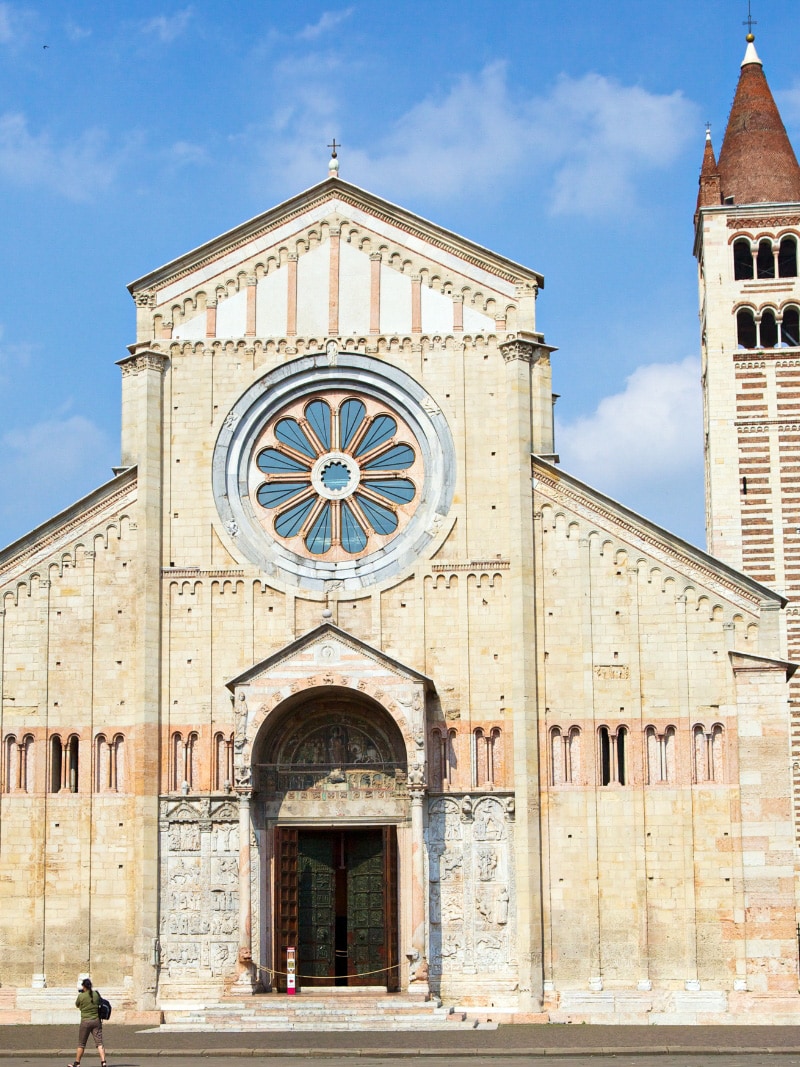
Several important events have taken place in the Basilica of San Zeno throughout history. This is where Romeo and Juliet got engaged. That’s one of the reasons why people come here. They want to see where they sealed this romantic story.
Inside is the crypt where the remains of St. in whose honour the basilica was built.

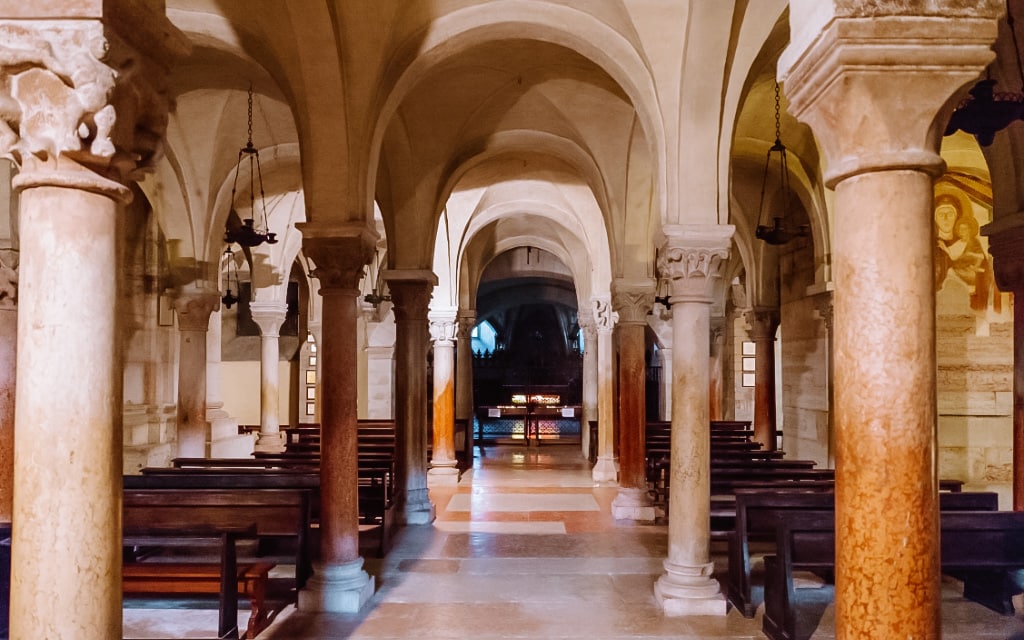
Admission and opening hours Basilica of San Zeno
Entrance fee: the price for entrance to the Basilica of San Zeno is 4 €. Children up to 18 years of age are admitted free of charge when accompanied by two paying persons, and children up to 11 years of age are always admitted free of charge, as are persons with disabilities, including their companions.
The ticket includes an audio guide in 5 languages (Italian, English, German, Spanish, French).
The second option is the “Percorso delle quattro chiese” (translated as “Journey of the Four Churches”) ticket for €8, which gives you access to all 4 main churches in Verona – the Basilica of San Zeno, the Cathedral complex, the Basilica of Santa Anastasia and the Church of San Fermo.
Opening hours: The Basilica of San Zeno is open daily and opening hours vary according to the season – from March to October Monday to Friday 9:00-18:30, Saturday 9:00-18:00 and Sunday and holidays 13:30-18:30.
From November to February, it is open Monday to Friday 10:00-17:00, Saturday 9:30-18:00 and Sunday and holidays 13:00-17:30.
Part of the Verona Card: yes, free entry with Verona Card
Accommodation in Verona 😴
2. Città Antica
Città Antica is a maze of cobbled streets and picturesque squares lined with medieval architecture, imposing palaces and stylish shops.
Wander the romantic streets of Città Antica and discover charming boutiques and cafés, as well as beautiful gardens and castles. Have a delicious home-cooked meal at the trattoria or a gelato and discover the hidden corners of the old town.
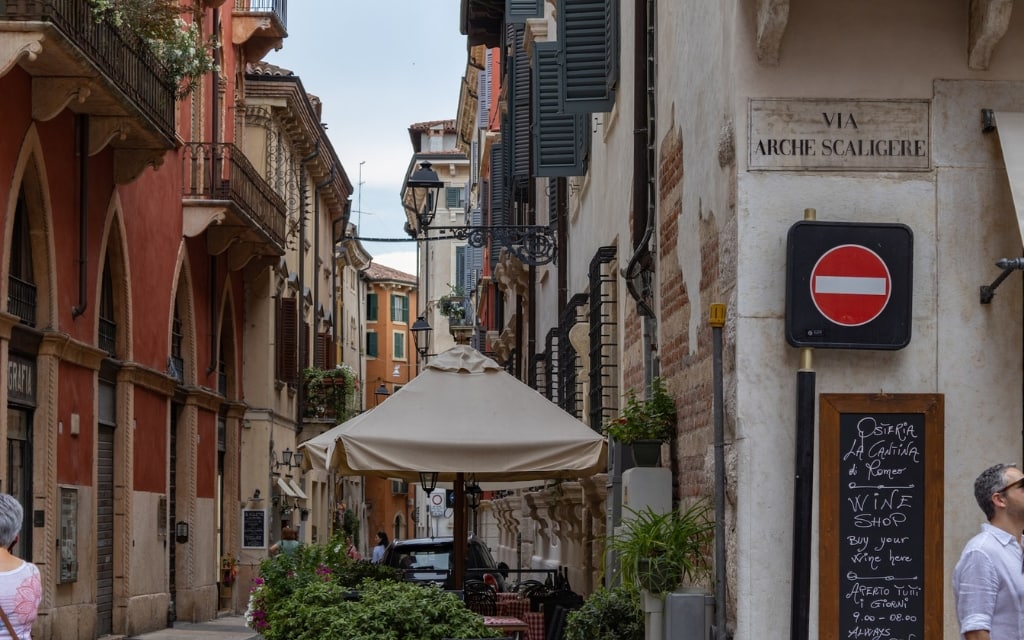
3. Piazza Bra
Piazza Bra is located in the historic centre of Verona. A beautiful open-air square surrounded by beautiful architecture, restaurants and cafes. Everyone rushes to Piazza Bra to see the domed façade of the Arena di Verona amphitheatre.
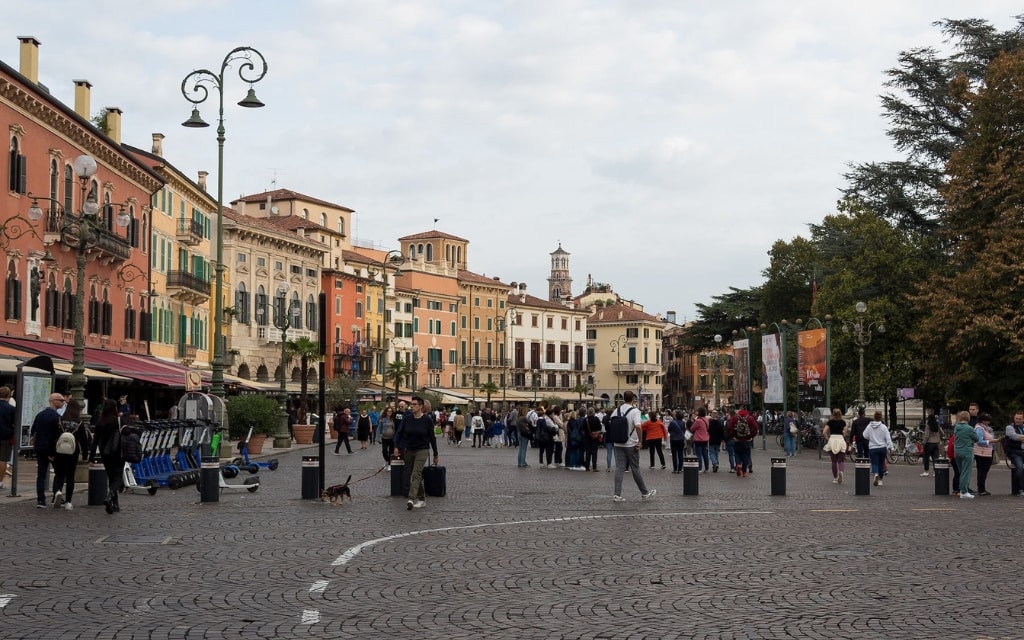
The square is large with a small green park in the middle where you can cool off from the heat of the Italian sun. In addition to the Roman amphitheatre, it is surrounded by the imposing Palazzo Barbieri, the Palazzo della Gran Guardia, where exhibitions are held, and the Portoni della Brà, the gateway to the oldest part of the city.

4. Roman Amphitheatre (Arena di Verona)
The Roman amphitheatre was built in 1st century AD (like the Colosseum in Rome). It is the third largest amphitheatre in the world and the best preserved.
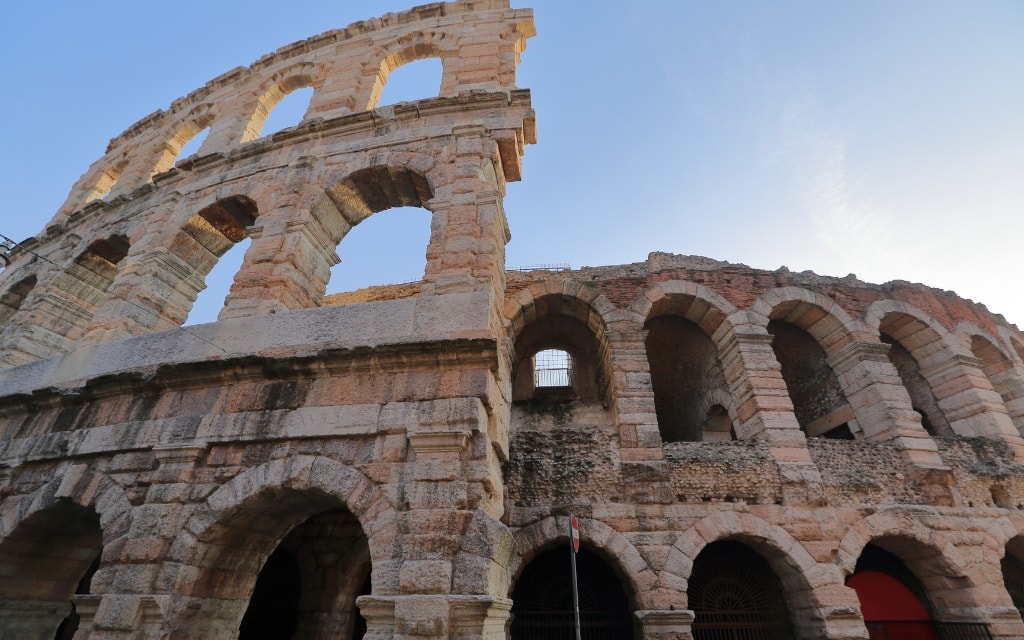
In the past, the arena was used as a place for gladiator fights, hunting wild and exotic animals and probably also for martyrdom of Christians. With the advent of Christianity, the arena lost its function and became a quarry for a time. Verdi’s Aida was first performed here in 1913 and since then 600,000 people a year have come to see summer performances.
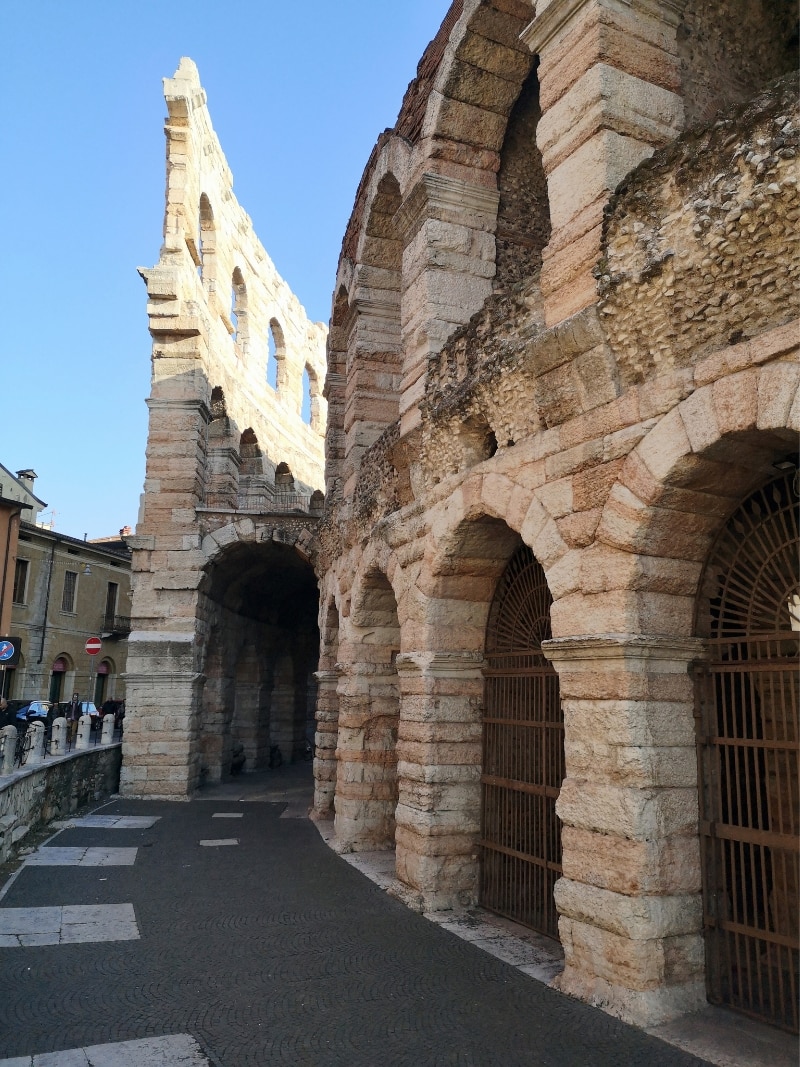
If you’ve visited the Colosseum in Rome, you might find a visit to the Arena di Verona less interesting (although if you love ancient Rome like Petya, you’ll probably be as excited as he is).
But the same cannot be said for the performances that are held here. The Arena di Verona is one of the largest open-air theatres in the world and can seat up to 22,000 people. This makes it ideal for large events such as operas, ballets and concerts. Check out the programme of the performance.
The acoustics are superb and the views from every seat are unbeatable, whether you’re going to a classical performance or want to enjoy a night show.
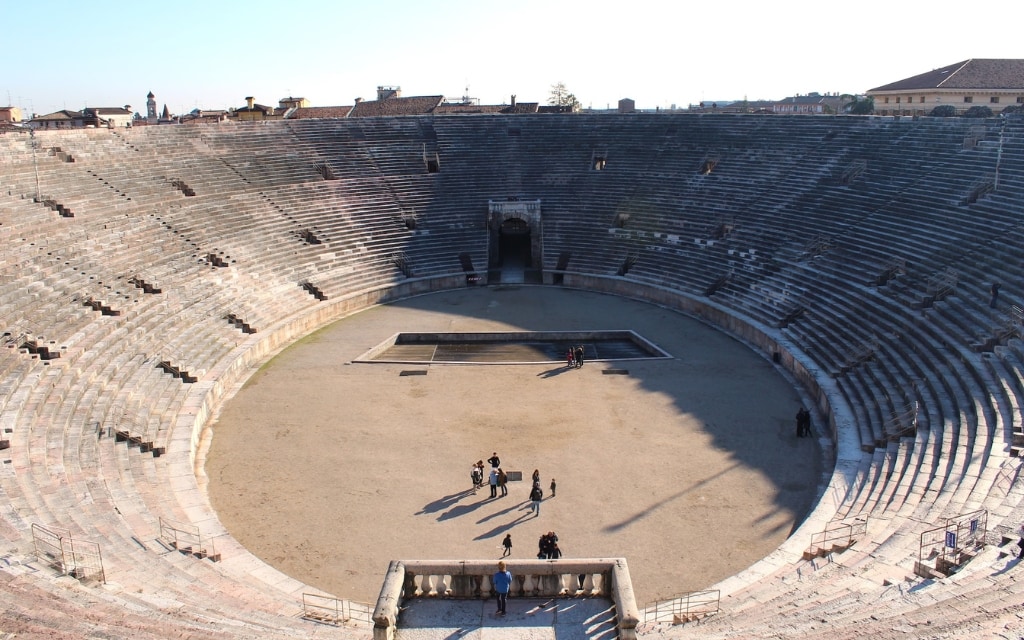
Admission and opening hours Arena di Verona
Admission: full admission to Arena di Verona is €12, for seniors over 65 €9, for students 18-25 €3. Children up to 18 years of age and disabled persons with an escort are admitted free of charge.
In season, book tickets for the amphitheatre tour in advance. This will save you from waiting in line in the scorching sun, plus you’ll be assured that the arena is open to the public for tours.
If you prefer guided tours, book at this link.
Opening hours: the opening hours of the Arena di Verona vary according to the season: from October to May it is open from Tuesday to Sunday from 9:00-19:00 and from June to September it is open on Mondays from 9:00-19:00 (last entry at 18:30) and from Tuesday to Sunday from 9:00-17:00 (last entry at 16:00). Box offices close one hour before closing time.
Part of the Verona Card: yes, the Arena di Verona tour is free with the Verona Card
5. Arco dei Gavi
The Roman Arch of the Arco dei Gavi is made of white Verona stone and reaches a height of almost 13 metres. The arch was already built in 1st century in celebration of the Roman Gavi family and was originally part of the city walls. It stood at the beginning of the Via Postumia, the Roman road leading into the city.
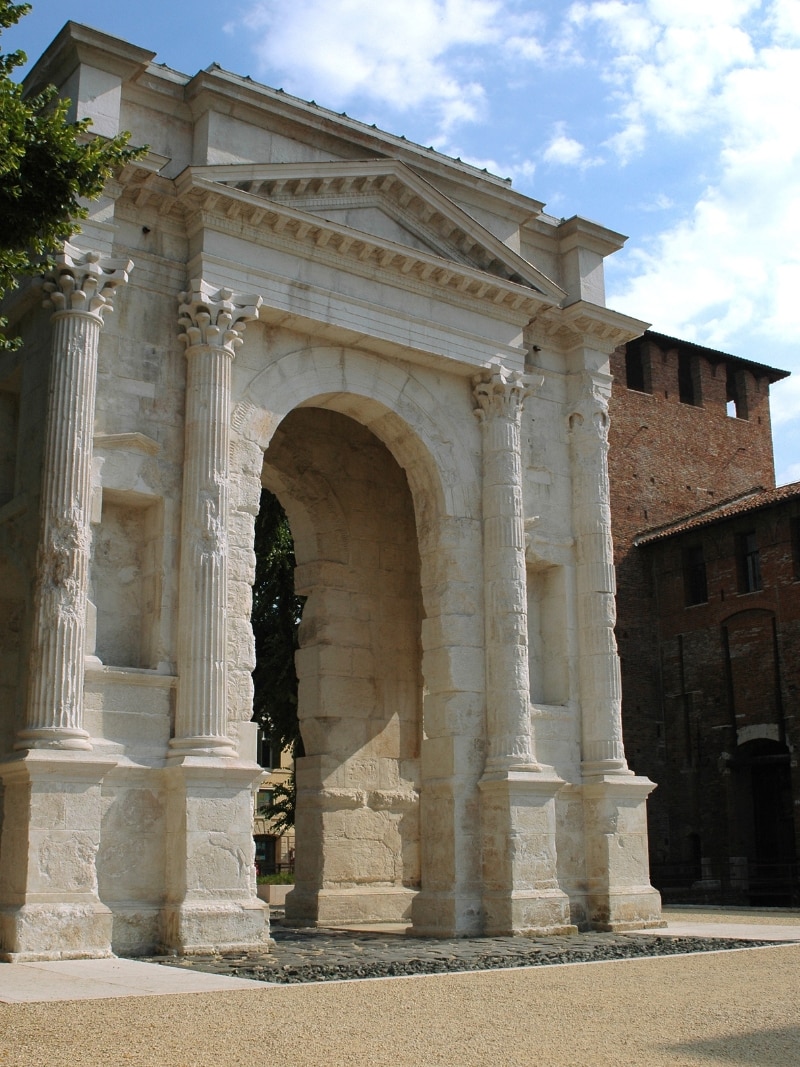
But this changed during the reign of Napoleon, when the French army demolished the arch. At the beginning of the 20th century, the arch was restored to its original form and placed in the small Piazzetta Castelvecchio.
In the evening, the Arco dei Gavi is beautifully lit.
6. Castelvecchio
The imposing Castelvecchio is one of the largest and most famous castles in Italy. It was built in 1354-1357 by the Veronese ruler Cangrande II. della Scala and is a masterpiece of medieval architecture.
The castle museum houses an extensive collection of ancient artefacts – including weapons, sculptures, paintings and books – as well as Renaissance art.
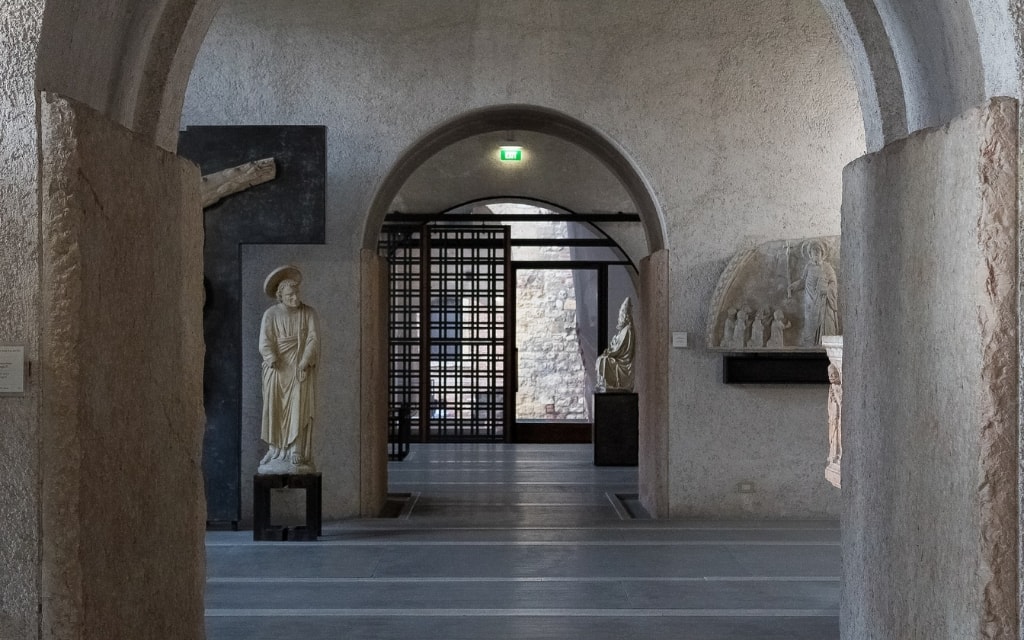
Once you’ve seen the interior and the collection, take a stroll around its courtyards and terraces overlooking the city.

Admission: full admission to the Castelvecchio Castle Museum is €9, €6 for seniors over 65 and €2 for students 18-25. From November to March, on the first Sunday of the month, admission is only €1. Persons with disabilities and children under 18 years of age are admitted free of charge.
Opening hours: the Castelvecchio is open from Tuesday to Sunday from 10:00-18:00 (last entry at 17:15).
Part of the Verona Card: yes, free entry with Verona Card
7. Ponte Scaligero
Several bridges span the Adige River. Ponte Scaligero is one of the most famous. It follows Castelvecchio and was built in the 14th century.
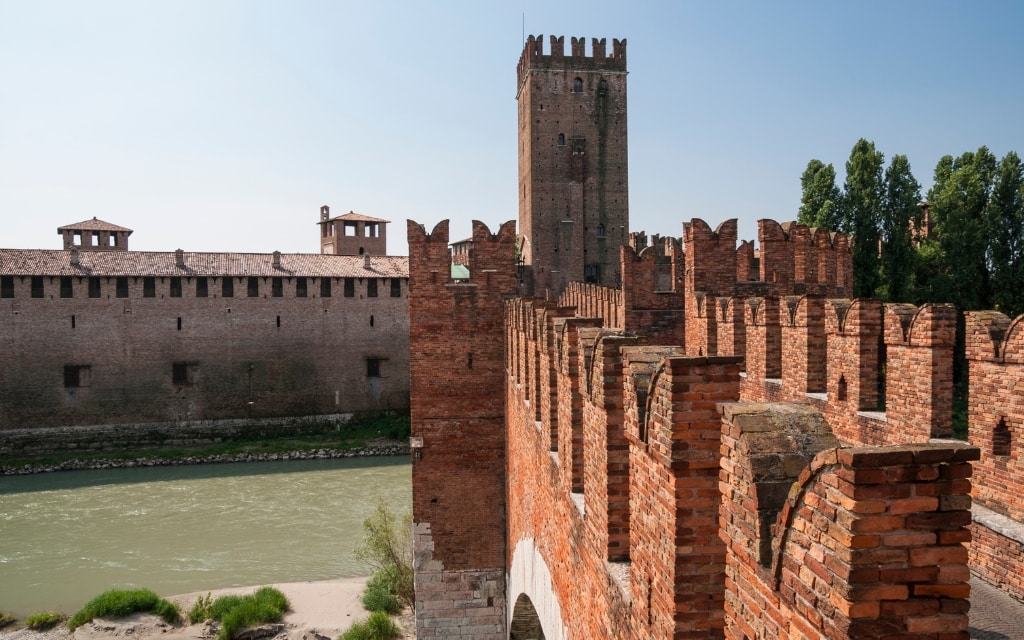
Ponte Scaligero is characterised by its three arches, one of which is 49 metres long and the other two are considerably smaller. Thanks to the red bricks with battlements, you can clearly distinguish it from other bridges in Verona.
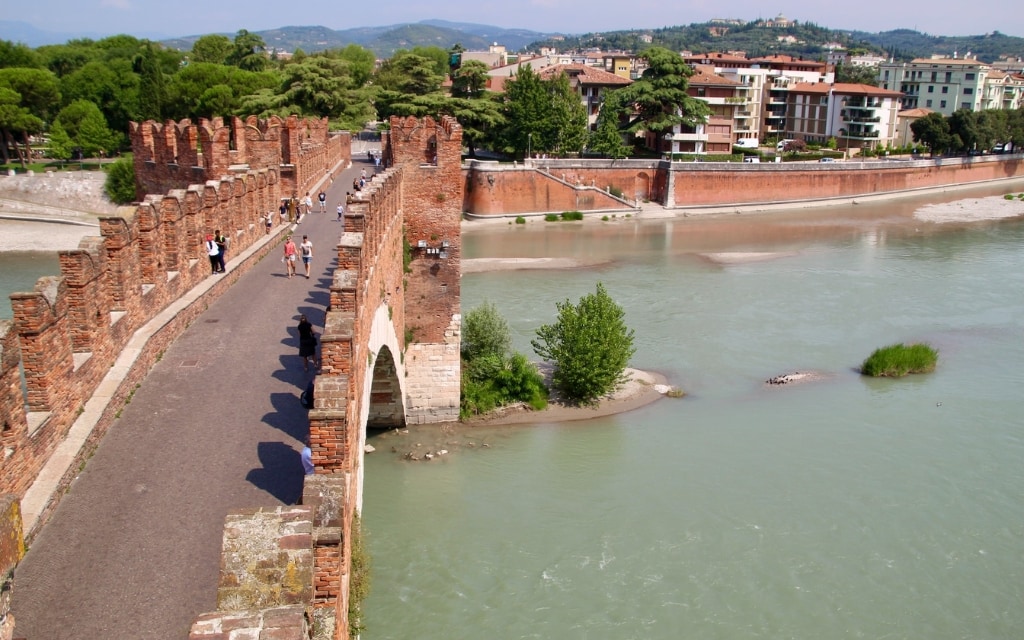
During World War II, Ponte Scaligero was blown up by the German army and faithfully reconstructed a few years later using original materials. Today you would not even know that it is not an original building.
In the middle of the bridge there are stairs on both sides, which you can climb and enjoy the view of the surroundings from a greater height.
8. Porta Borsari
Porta Borsari is another important Roman monument in Verona. It comes from 1st century, when it was part of the city walls and served as the main entrance gate to the city. The two-storey and vaulted Porta Borsari was made of white stone and is in excellent condition.
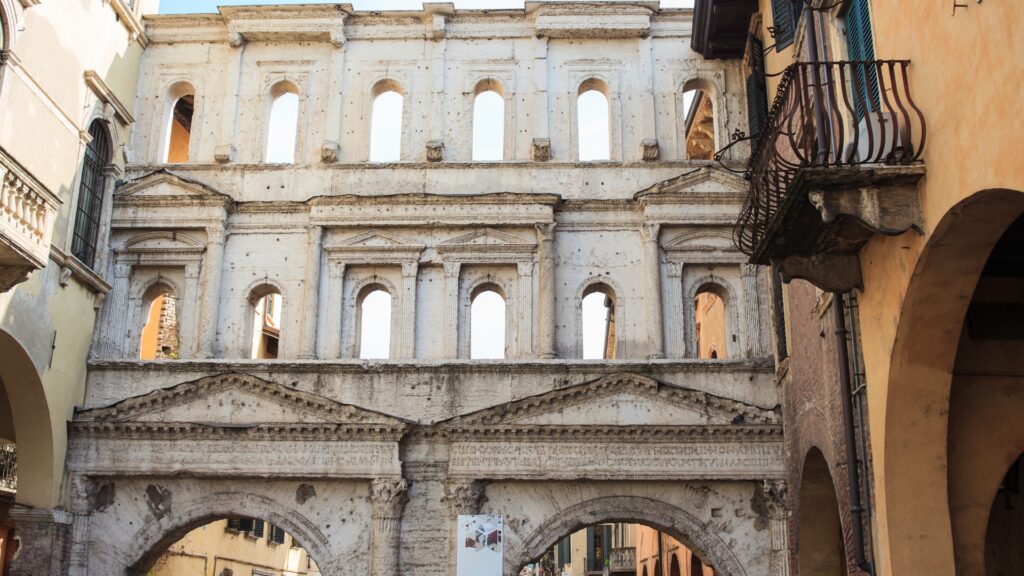
9. Juliet’s house (Casa di Giulietta)
Yes, Casa di Giulietta is touristy. Sometimes in high season there are so many tourists that you can hardly move. Nevertheless, Casa di Giulietta must be on the list of sights to visit in Verona. A symbolic place that gave Verona the face of the city of love.
In the courtyard of the house from 14th century, there is a bronze statue of Juliet and above it the famous balcony under which, according to the story, Romeo confessed his love to Juliet. This is everyone taking pictures with their hand on Julia’s bronze breasts. For luck. Or just for a picture.
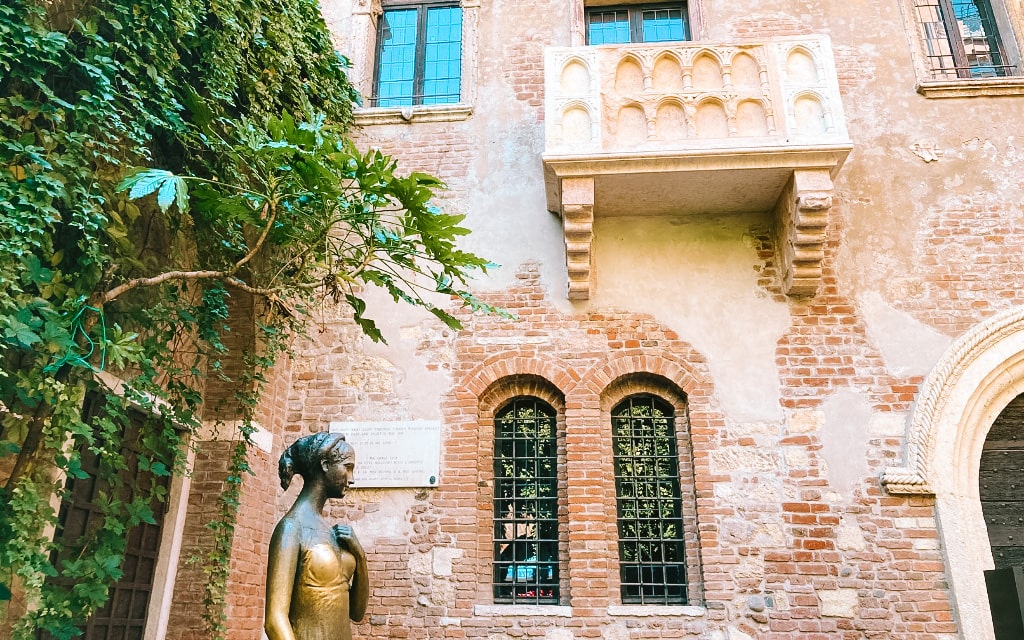
Entrance to the courtyard is free – it leads from Via Cappello. On the way to the courtyard you will pass letters written by people. Inside the building there is an interesting little museum that tells the story of Romeo and Juliet and why Verona became the city of love. From the museum you can also go out onto the balcony.
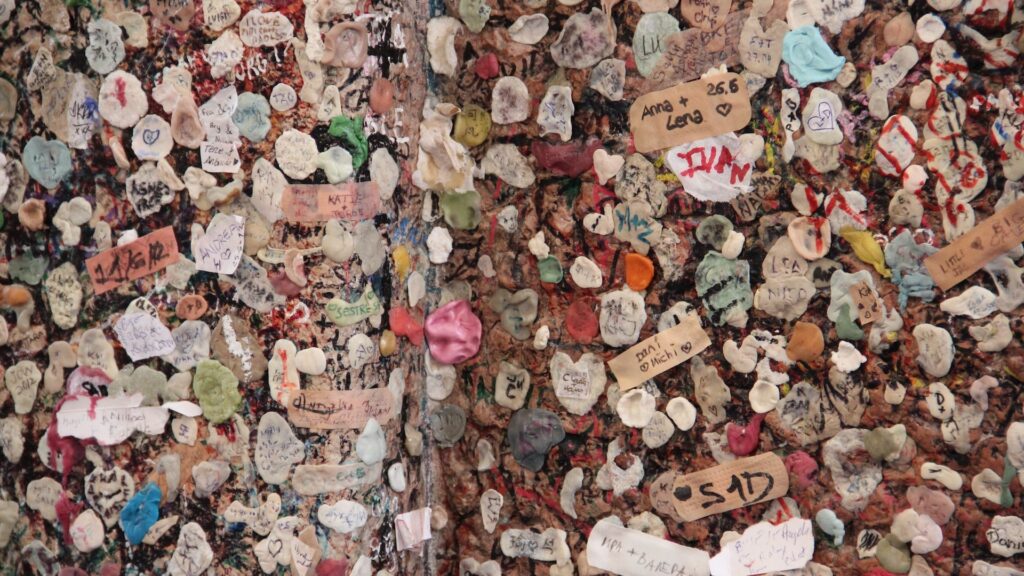
Admission: full admission to Juliet’s House is 12 €, for people over 65 years 9 € and for students 18-25 years 3 €. Children under 18 years of age and persons with disabilities and accompanying persons are admitted free of charge. Advance booking required.
Opening hours: from Tuesday to Sunday 9:00-19:00 (last entry at 18:30), closed on Mondays
Part of the Verona Card: yes, free entry with the Verona Card – but advance booking is required based on the instructions you receive in your email.
Tip: Just a short walk from Casa di Giulietta is Casa di Romeo. The house is inaccessible from the inside, but if you love the story of Romeo and Juliet, Casa di Romeo will help you complete their story in Verona.
10. Piazza dei Signori
If you’re looking for a piece of medieval Italian history, don’t miss Piazza dei Signori in Verona. This beautiful square dates back to the 12th century and is full of palaces that tell the story of Verona’s past. It used to be the centre of political and economic life.
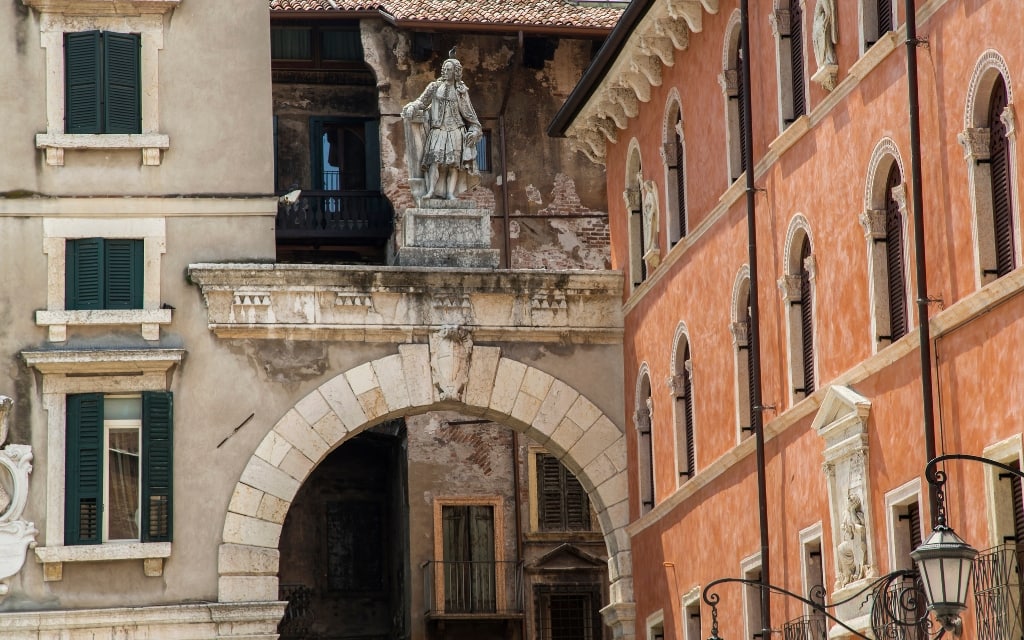
Today it is a busy public space with a statue of the poet Dante in its centre. And why does Dante have his statue here if he came from Florence?
Dante had been living in Verona for 7 years when he was expelled from Florence. He is considered the father of Italian because he made Italian accessible to the general public. Until then, it was written in Latin, which only the most educated could read. Dante went against the tide and started writing his poems in Italian.

11. Scaliger’s Tombs (Arche Scaligare)
Just a few steps from the Piazza dei Signori, you’ll find the Scaliger Tombs on the high ground behind the fence. The beautifully decorated, Gothic tombs of the three most important members of the Scaliger family, who lived in Verona around the 13th century. In summer, you can visit the tombs for a small fee.

12. Piazza delle Erbe
The bustling Piazza delle Erbe in the city centre is famous for its flower market and antiques fair. The fountain with the Roman statue of Madonna Verona is the focal point. Around it are some of the most beautiful monuments in Verona: the Palazzo Maffei, the Case dei Mazzanti with its frescoes and the Torre Lamberti.

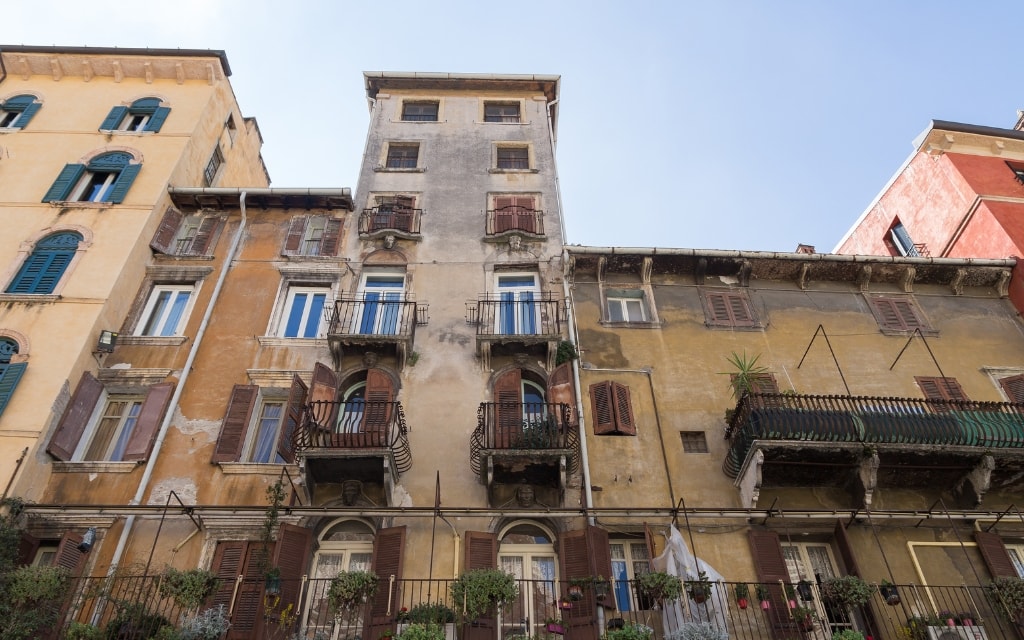
The entire square is lined with restaurants, bars and cafés. But truthfully, most of them aren’t worth much. But the same cannot be said for La Prosciutteria Verona right across the fountain.
13. Torre dei Lamberti
Torre dei Lamberti is an 82-metre high tower, the tallest in Verona, which gives you the best view of the historic centre of the city. The tower was built in 1172 by the Lamberti family and has since become an iconic symbol of Verona. It is called the “Tower of Love”.

The journey to the top of the Torre dei Lamberti is worth it alone – you can take the transparent elevator (two-thirds of the way up and then there are a few more steps to the viewpoint) or climb all 368 steps. Once at the top, enjoy panoramic views of Verona and its surroundings.
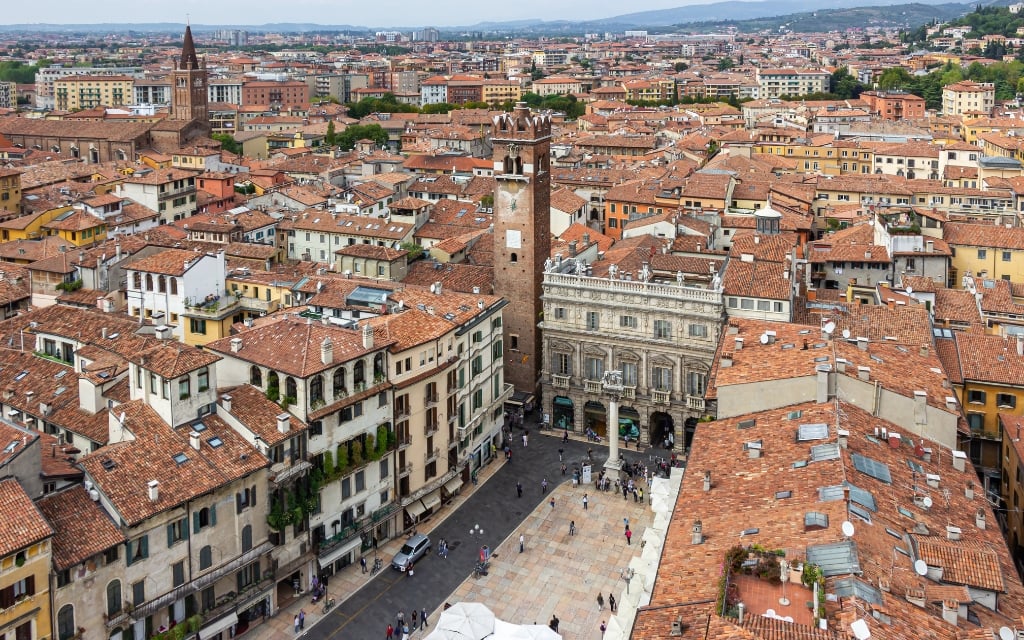
Admission: full admission is 6 € and reduced admission is 4,5 € (seniors over 60 years and children 8-14 years). The ticket also includes admission to the Gallery of Modern Art. Click to purchase tickets in advance (and skip the line at the door).
Opening hours: Torre dei Lamberti is open Monday to Friday 10:00-18:00 and Saturday, Sunday and public holidays 11:00-19:00. The last entry is always 45 minutes before the end of opening hours.
Part of the Verona Card: yes, free entry with Verona Card
14. Church of San Fermo Maggiore (Chiesa di San Fermo Maggiore)
The Church of San Fermo Maggiore is not at the top of the sights to visit in Verona. This is a great pity, because it is completely different from other churches in the city.
The Church of San Fermo Maggiore is unique in that it contains 2 churches – a lower/underground church in Romanesque style with frescoes and numerous arches, and an upper Gothic church with a beautifully decorated wooden ceiling. The church is located on the eastern side of the city walls and is one of the 4 main churches in Verona.

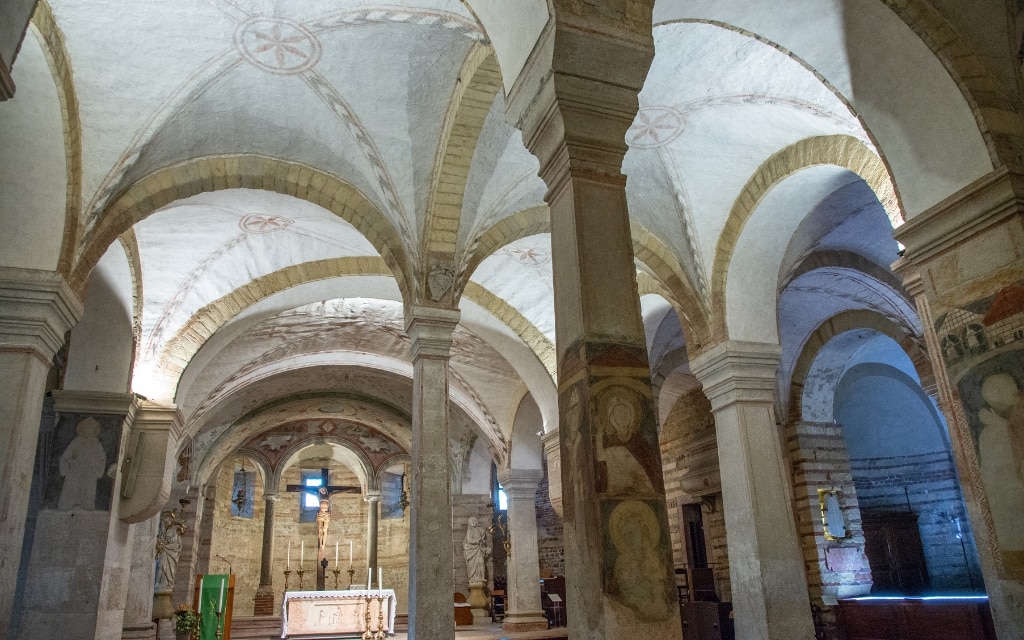

Admission and opening hours of the Church of San Fermo Maggiore
Entrance fee: the price of admission to the Church of San Fermo is 4 €. Children up to 18 years of age are admitted free of charge when accompanied by two paying persons, and children up to 11 years of age are always admitted free of charge, as are persons with disabilities, including their companions.
The ticket includes an audio guide in 5 languages (Italian, English, German, Spanish, French).
Opening Hours: The Church of San Fermo is open daily at the following times – Monday to Saturday 10:00-18:00 and Sunday and public holidays 13:00-18:00.
Part of the Verona Card: yes, free entry with Verona Card
15. Verona Cathedral (Complesso del Duomo)
The beautiful Romanesque-Gothic cathedral from the 12th century dominated by Piazza Duomo. The striped pink marble exterior matches the interior, where you can admire the marble tiles, the Gothic arches decorated with intricate patterns and the altar by Titian (on the left side in the first chapel).
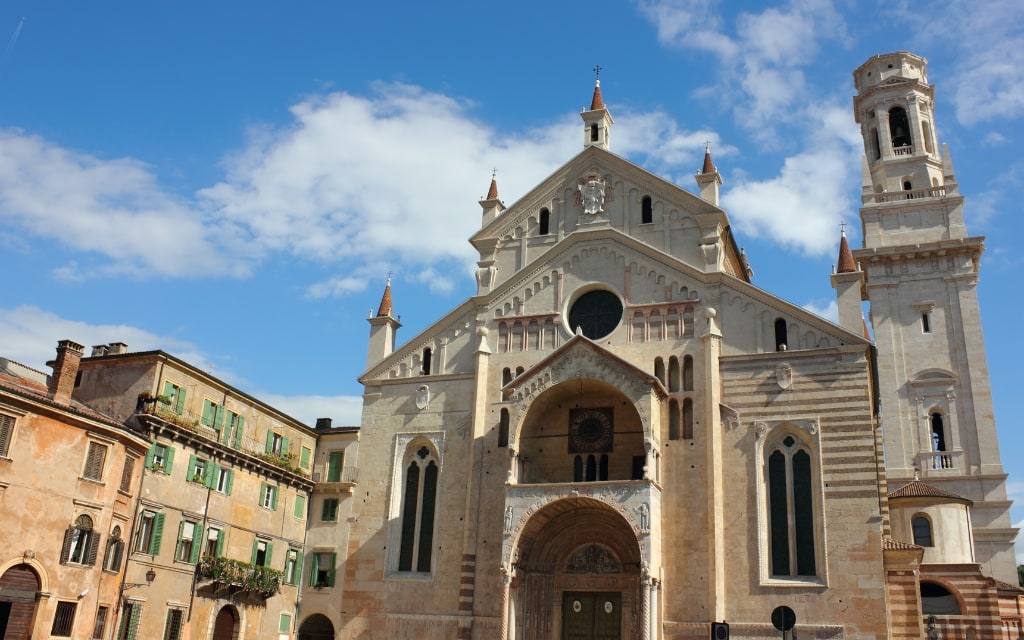
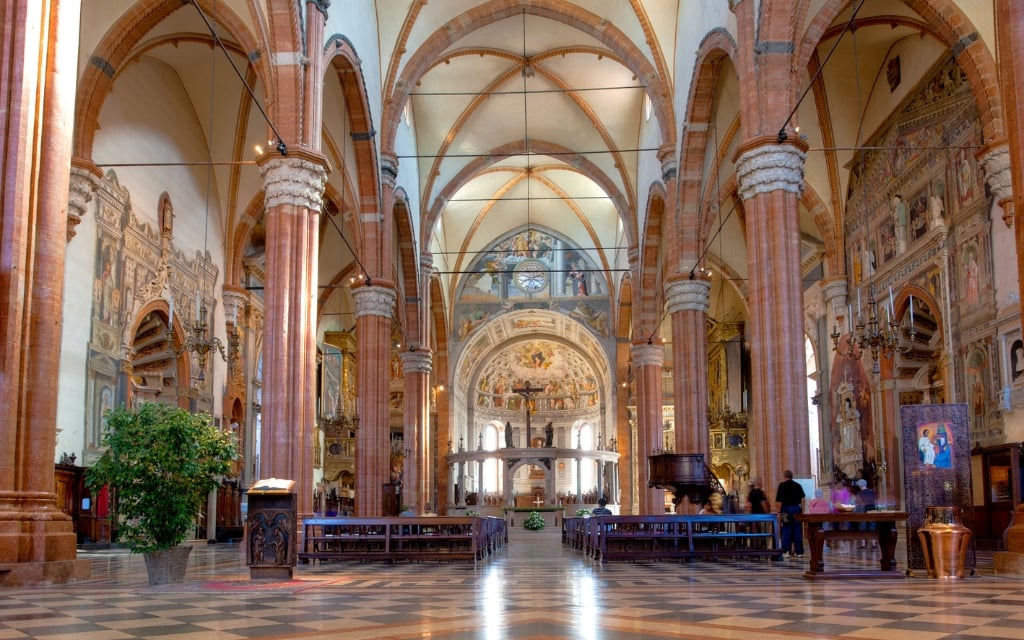
The cathedral complex also includes the Baptistery of San Giovanni in Fonte at the back of the cathedral and the Church of St.
Admission and opening hours Complesso del Duomo
Entrance fee: the price for entrance to the cathedral complex is 4 €. Children up to 18 years of age are admitted free of charge when accompanied by two paying persons, and children up to 11 years of age are always admitted free of charge, as are persons with disabilities, including their companions.
The ticket includes an audio guide in 5 languages (Italian, English, German, Spanish, French).
Opening hours: the Cathedral is open daily at the following times – Monday to Friday 11:00-17:00, Saturday 11:00-15:30 and Sunday and public holidays 13:30-17:30.
Part of the Verona Card: yes, free entry with Verona Card
Read: The most beautiful places to visit in Northern Italy.
16. Basilica of Santa Anastasia (Basilica di Santa Anastasia)
Verona harbours a number of beautiful churches and basilicas. The Basilica of Santa Anastasia is the most solemn. It dominates the small Piazza Santa Anastasia and literally overshadows the church on its right.
The Basilica of Santa Anastasia is a perfect example of Veronese Gothic architecture with Renaissance elements. Its facade was never completed. Inside, it is beautifully decorated with frescoes by Pisanello and Altichiero, mosaics and sculptures.
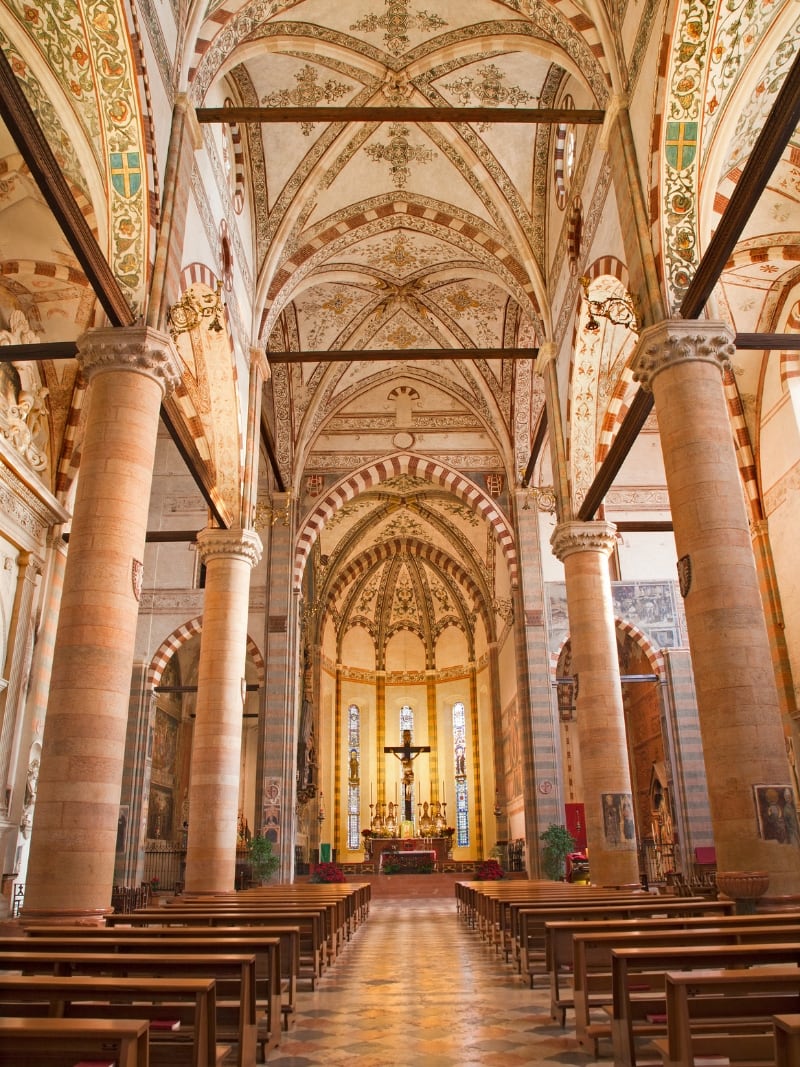
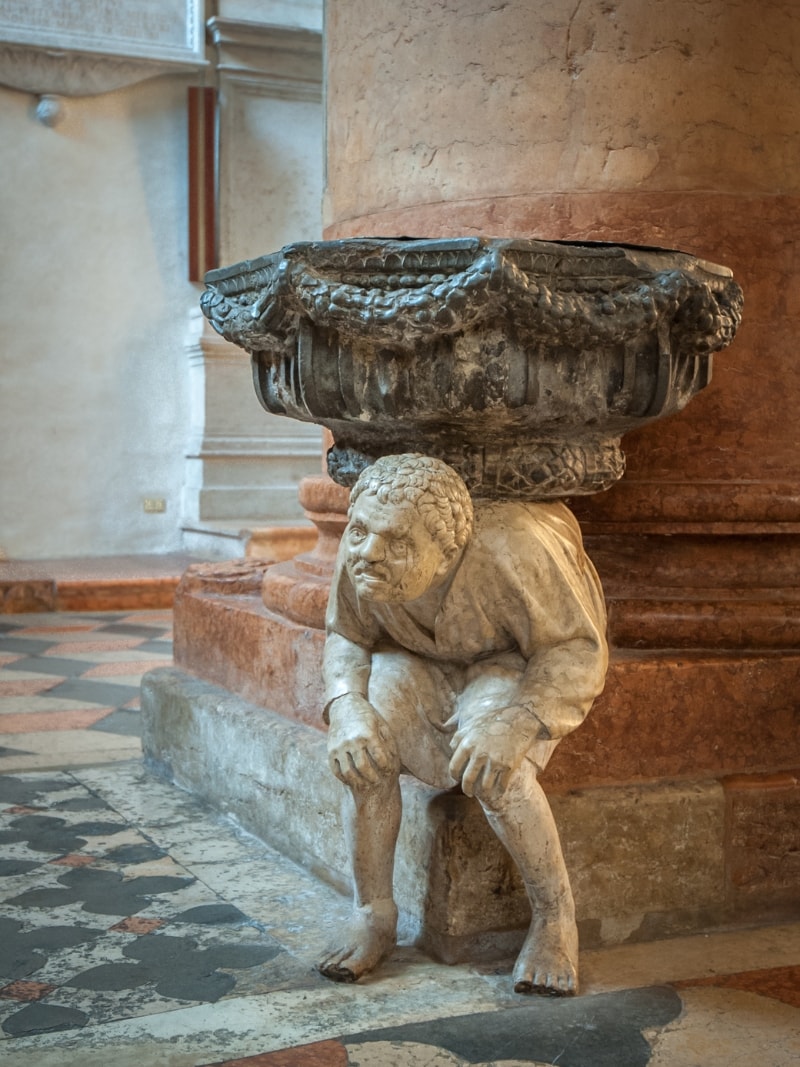
Tip: La Bottega della Gina is just a short walk away and serves delicious homemade pasta.
Entrance and opening hours of the Basilica of Santa Anastasia
Entrance fee: the price for entrance to the Basilica of Santa Anastasia is 4 €. Children up to 18 years of age are admitted free of charge when accompanied by two paying persons, and children up to 11 years of age are always admitted free of charge, as are persons with disabilities, including their companions.
The ticket includes an audio guide in 5 languages (Italian, English, German, Spanish, French).
Opening Hours: The Basilica of Santa Anastasia is open daily at the following times – Monday to Saturday 9:30-18:00 and Sunday and public holidays 13:00-18:00.
Part of the Verona Card: yes, free entry with Verona Card
17. Ponte Pietra
The ancient Roman bridge Ponte Pietra (translated as the Stone Bridge) spans the Adige River and offers a magnificent view of the city’s skyline. The bridge is one of the oldest bridges in Italy. An architectural marvel that has stood here since 100 BC. n. l. and still in use today. The bridge is 120 metres long and consists of 5 arches.
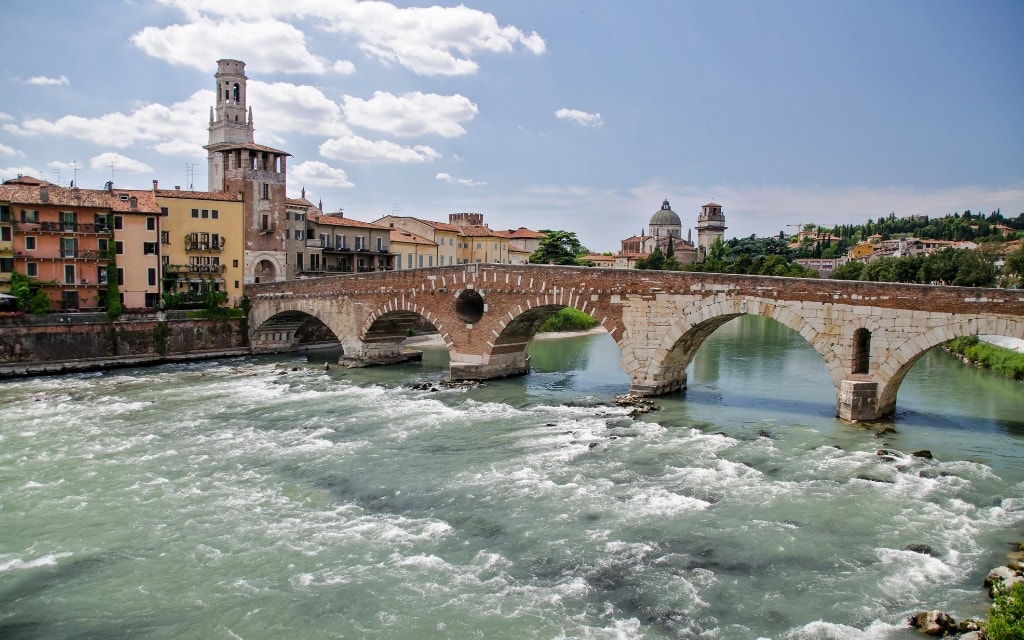
During World War II, 4 arches of the bridge were blown up by retreating German troops. A few years later, the city had the bridge reconstructed using the original materials.
Visiting the Ponte Pietra feels like being transported back to Roman times. It’s a beautiful sight, especially at sunset when the warm light reflects off the red bricks of the bridge.
Via Ponte Pietra, you reach the lively Veroneta district, full of medieval architecture, narrow streets and restaurants. The district is also home to the Castel San Pietro fortress.
18. Castel San Pietro
Castel San Pietro is a fortress high on St Peter’s Hill above Verona. What does that imply? The views of Verona from here are some of the best.
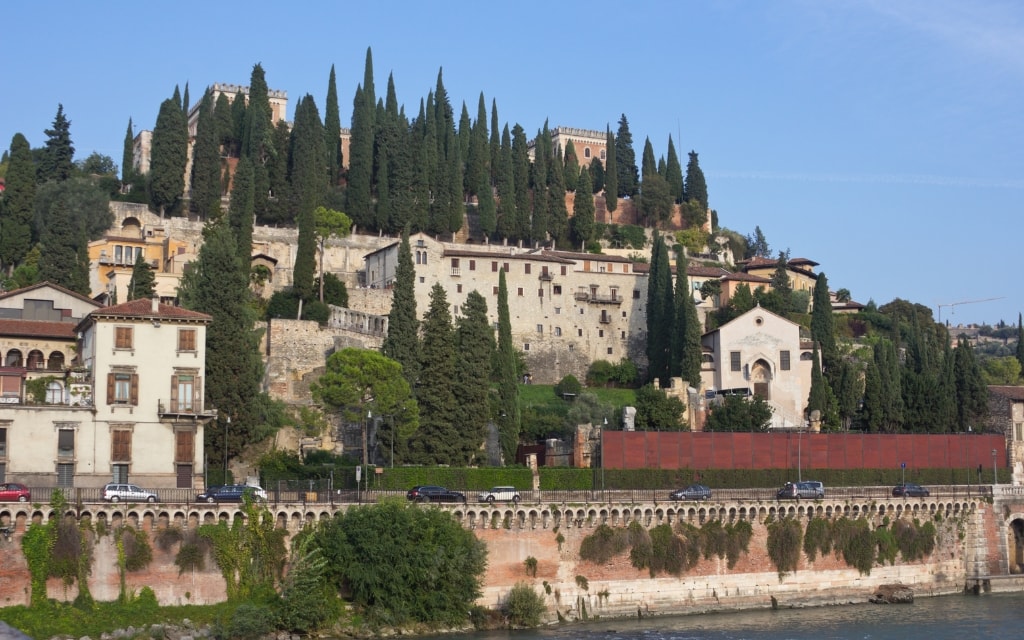
The castle was built in the 14th century as part of the town’s defence system. Nowadays it is not open to the public, but don’t miss a visit if you want to see the whole historic centre of Verona.

The top can be reached on foot or by an overground cable car (1.5-minute ride), which is a short walk from Ponte Pietra.
If you walk, the stairs are sandwiched between the houses just opposite the bridge. You’ll be at the top in 10 minutes.
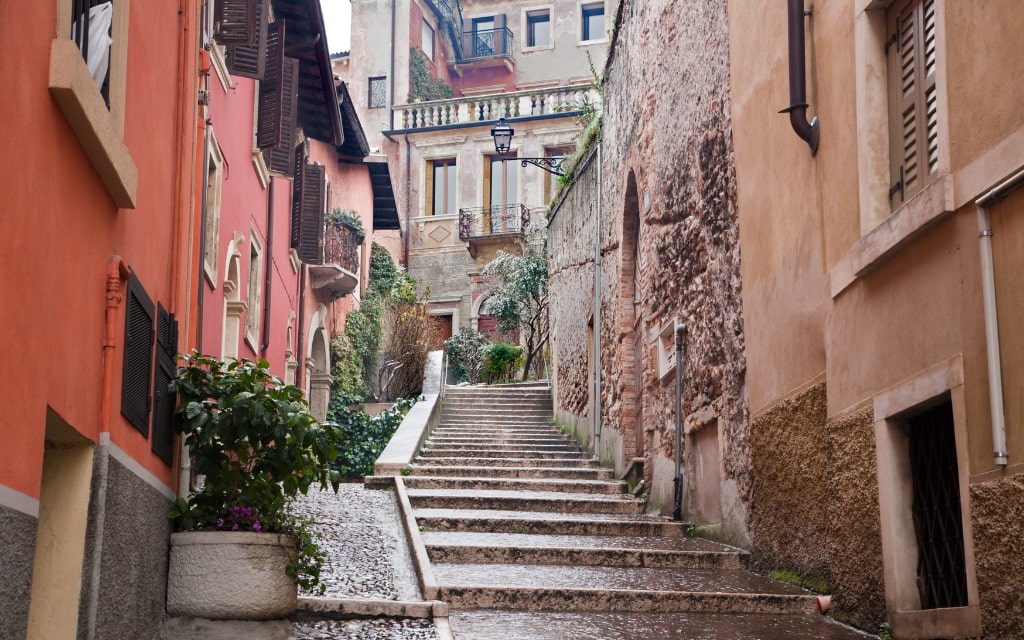
Would you rather take a nearly 100-year-old cable car? Once you have passed Ponte Pietra, look for the Funicolare di Castel San Pietro signpost, after which you turn left. You will reach a small courtyard with a restaurant, where you will see a large entrance to the cable car.
Cable car to Castel San Pietro
Fares: return fare is €3 (one-way ticket €2). A reduced return fare of €2 applies for children under 10 and seniors over 65. Children up to 1 year and disabled children with an accompanying person are free of charge.
Opening hours: the cable car is open daily and the time varies according to the season – from April to October the cable car is open from 10:00-21:00 and the rest of the year from 10:00-17:00.
Read our itinerary on how to spend a day in Verona (including a map of the route).
19. Giardino Giusti
Verona is interspersed with green parks and gardens. The Giardino Giusti is one of the most beautiful and the only Italian-style garden from the 16th century in Verona. Goethe and Mozart also contemplated here.
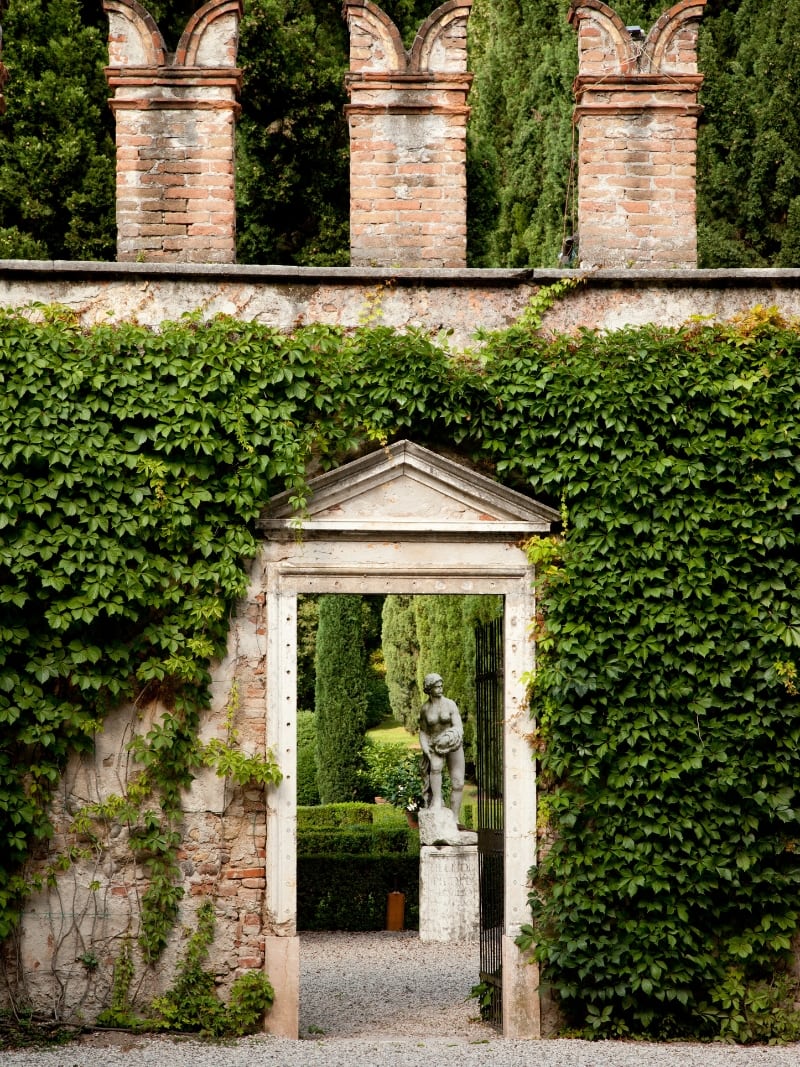
Admission: full admission is 12 € and reduced 9 € for students and children. Admission is free for children up to 6 years of age and persons with disabilities with an accompanying person.
Opening hours: open daily 9:00-19:00 (last entry at 18:00).
Part of the Verona Card: yes, with the Verona Card you pay a reduced entrance fee of 9 €
20. Roman Theatre and Archaeological Museum
The Archaeological Museum is a must-stop for anyone who loves Roman history. It is located at the foot of the San Pietro hill. It includes a magnificent Roman theatre from the 1st century, which was lost for centuries under the buildings that were built on its ruins.
Only in 19th century, archaeological excavations began and today it is one of the best places to visit in Verona.
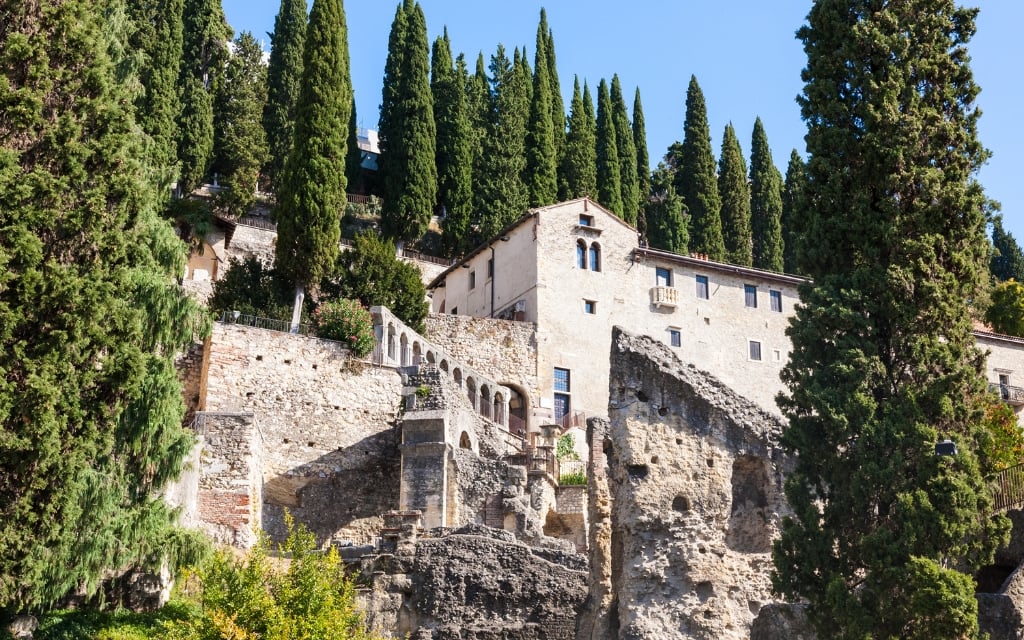
Admission: full admission costs 9 €, for people over 65 years 6 € and for students 18-25 years 2 €. Children under 18 and persons with disabilities are admitted free of charge with an accompanying person.
Opening hours: The Archaeological Museum is open from Tuesday to Sunday from 10:00-18:00 (last entry at 17:30).
Part of the Verona Card: yes, free entry with Verona Card
Where to stay in Verona?
- Hotel Milano: Fantastic hotel in the historic centre with roof terrace and city views
- Hotel Leopardi: 4* hotel with wellness, parking and walking distance to the centre
- Euromotel Croce Bianca: Cheap, clean accommodation on the edge of the centre with free parking
- Hotel Porta Palio: A pleasant hotel in a medium price range a short walk from the station and the centre
Accommodation in Verona 😴
How to save in Verona?
Verona Card is Verona’s official tourist card, which gives you free entry to most of Verona’s sights, including:
- Arena di Verona (priority entry with skip the line)
- Castelvecchio
- Casa di Giulietta and Juliet’s balcony
- Torre dei Lamberti
- Basilica of San Zeno
- Basilica of Santa Anastasia
- Church of San Fermo
- Cathedral complex
- Museo Archeologico al Teatro Romano and other museums in Verona
- For a complete list of places included in the Verona Card, please follow this link.
Verona Card also includes unlimited free local bus transport (not valid for airport buses).
The Card is valid for 24 or 48 hours from the first use (on the bus or by entering the monument).
How much does the Verona Card cost
The price of the Verona Card varies depending on how long you buy it for. The choice is 24 or 48 hours from first use. The prices are as follows:
- Verona Card for 24 hours for 27 €
- Verona Card for 48 hours for 32 €
How does the Verona Card work?
Buy a Verona Card for 24 or 48 hours. Pick up your card with confirmation in Verona – the tourist information centre is located to the right of the Arena di Verona.
It’s poorly marked on Google maps – to the right of the Arena di Verona you’ll see the town hall building with its large columns. To the right of it is the Palazzo Bra with its battlements, where the information centre is located. Open daily – Monday to Saturday 9:00-17:00 and Sunday 10:00-16:00.

What to taste in Verona?
Gnocchi is one of the most popular dishes in Verona. And they are served in a variety of ways – with butter and parmesan, tomato sauce and parmesan, with melted gorgonzola or sweet with sugar and cinnamon.
Gnocchi is also part of the Pastisada de caval, which has been cooked in Verona since the 6th. It has been made in Verona since the 17th century. This dish is based on slow-cooked horse meat in wine with vegetables and aromatic herbs.
The minced meat risotto or polenta, which is prepared in several ways, is also popular. For a sweet treat, try sfogliatelle or small fried fritole desserts.

Where to eat in Verona?
Verona is known not only for its beautiful sights, but also for its excellent cuisine. And the locals are very particular about it, so you’ll rarely go wrong in any restaurant. Whether you choose a modern restaurant or a cosy trattoria, you can choose from a wide range of traditional dishes and fine wines.
If you want to enjoy honest cuisine, cooked with local ingredients and respecting Verona’s culinary traditions, look for restaurants with a plate emblem and the words “Ristorante tipico di Verona”.
One is located right on Piazza Bra by the Arena di Verona – Emanuel Café, and a cozy trattoria in a narrow alley – Tre Marchetti.
Osteria al Duca can be visited during your wanderings through the historic centre, as well as Ristorante Greppia, one of the best restaurants in Verona.
Things to do do in Verona – Map
HOW TO USE THIS MAP: Above you will find a detailed map with tips on sights and attractions to visit in Verona, Italy. Click at the top left of the map to see separate layers with highlighted locations. You can hide and show the different layers or click on the icons on the map to see the names of the places I mention in the Verona guide. If you want to save the map, star it. For a larger version, click on the icon in the upper right corner.
How to get to Verona?
Verona is very accessible by car, train and air. There are several international airports in the vicinity, with regular flights from a number of European cities:
- Aeroporto Valerio Catullo is the nearest airport to Verona
- Aeroporto di Venezia “Marco Polo” is the airport for Venice, which is 1.5 hours from Verona
- The airports in Milan are about 2 hours away
Porta Nuova Central Train Station is located south of the centre and is about a 20-minute walk from Arena di Verona.
If you’d like to take a trip around the area, trains are the best way to see more of Italy. For train connections, visit the Italian Railways website trenitalia.com. Our recommendations for trips around Verona and driving distances:
- Venice – 1h 30min
- Padova – 1h
- Brescia – 35min
- Lago di Garda – 15min
- Trento – 1h
Accommodation in Verona 😴
Transport in Verona
Transportation in Verona is easy and convenient. The main means of transport is buses, whose extensive network serves the entire city. Regular bus services run to all the main parts of the city and its suburbs, and several lines connect the city with neighbouring towns.
A 60-minute ticket costs €1.50 and a full-day ticket costs €5. Tickets can be purchased at newsstands, at train stations or directly on the bus at vending machines (beware – no refunds) or from the driver for €2 (the driver’s ticket is valid only for the journey).
Always mark your ticket, even when changing planes. You can now also buy your ticket via the Ticket Bus Verona app.
Cycling is also a popular mode of transport in Verona, with an extensive network of dedicated cycle paths and cycle lanes throughout the city. There are also several bike stations around the city (mostly in and around the centre). I recommend bikeverona.it, which offers the most sites.
Where to park in Verona?
The Historic Centre is a ZTL area where traffic is restricted to residents only. You can park south of the centre, where there are several parking garages.
As it happens, the parking garages closest to the centre are the most expensive (around €20 for all-day parking). On the other hand, you are 5 minutes away from Arena di Verona. Parking garage on the edge of the center:
If you don’t mind a 10-15 minute walk from the centre, I recommend these two car parks, which are reasonably priced with good accessibility:
- Parcheggio Centro – a parking garage with plenty of parking spaces; just cross the bridge and in a few minutes you are in the centre
- Parcheggio Tribunale – good value outdoor parking 10 minutes from Arena di Verona
The nearest free car park is Parcheggio Porta Palio. The parking lot is outside and not guarded, so I would recommend it for day parking only. The Basilica of San Zeno is about a 10-minute walk away and the centre is about 20 minutes away.
Plan your trip quickly and easily. If you buy something through our links, we get a small commission. You pay nothing extra. Thank you!
These were our top tips for best places to visit and things to do in Verona, Italy. Do you have a question? We’ll be happy to answer it in the comments below. Have a safe journey!
More information about Italy
VERONA: Check out our itinerary for visiting Verona in one day. A map is also included for easy itinerary planning.
NORTHERN ITALY: Get inspired with this list for the most beautiful places to visit in Northern Italy, including a map.
ITALY: Get inspired by the most beautiful places in Italy.
VENICE: In the article What to visit in Venice we bring you tips on the most beautiful places and other useful tips.
ROME: Rome is one of the most popular cities in Europe. Here’s a list of the best things to see in Rome. Build your 3-day Rome itinerary and see how to save in Rome. Find out all about the Vatican Museums or the Colosseum.
LOMBARDY: Milan is the capital of Lombardy, famous for its magnificent cathedral. For more tips and practical information on where to stay in Milan, read our guide to accommodation in Milan (budget accommodation, airport and sightseeing connections, map).
Just outside Milan is Lago di Como, a beautiful alpine lake. Or check out our 15 tips on what to see in Bergamo.
Here are more than 30 tips on what to visit at Lago di Garda, including other useful information.
TUSCANY: Tuscany is one of the most popular parts of Italy. You can’t miss Florence on your visit to Tuscany.
Pisa is another wonderful city to see in Tuscany.
Read even more tips on travelling in Italy.
Summary: Best things to do in Verona
Arena di Verona should be on the list of anyone planning to see Verona. Wander through the labyrinth of narrow streets that together form the historic centre of this UNESCO World Heritage Site. Visit Castelvecchio, Piazza delle Erbe, Piazza Dante or Juliet’s House. Don’t miss Verona Cathedral or the Basilica of Santa Anastasia, the most decorated church in Verona. Outside the historic centre is the Basilica of San Zeno, where Romeo and Juliet were married.
Verona is a very popular city for a day trip. You can see the most famous sites in one day (see the Verona in one day itinerary map), but if you want to soak up the city’s atmosphere at a more leisurely pace, I recommend staying overnight in Verona. Verona is also a great base for trips to the surrounding area – Lago di Garda, Venice or Padua.
Verona’s cuisine is renowned. Few restaurants give you a bad meal. Try the gnocchi, which is prepared in several ways. Polenta dishes are also popular, as they are in neighbouring Lombardy. A typical dish is Pastisada de caval, made of slow-cooked horse meat and aromatic herbs.
